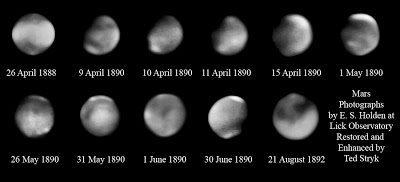
Figure 1 – Earliest known to be extant images of the Planet Mars taken by E. Holden with the 36″ Reflector at Lick Observatory and subsequent enhanced by using modern image processing techniques by Ted Stryk and used with permission.
Back in September I blogged about the spectacular photographs released by NASA demonstrating the existence of liquid water on Mars. This got me interested in the perhaps esoteric question of who was the first person to photograph the planet Mars. I have been doing some research on this question and I think that I have found the answer. First, you’ve got to know that early photographic systems: daguerreotypes, wet collodion plates, and dry plates basically just did not have sufficient sensitivity. They weren’t up to the job. As a result the first Mars photographs were significantly later than one might expect.
According to Stefan Hughes’ book “Catchers of the Light,” the earliest attempt to photograph the planet Mars was undertaken by Benjamin Apthorp Gould, then Director of the National Argentine Observatory at Cordoba in 1879. These showed little or no surface details and were therefore considered to be devoid of scientific value.
I have not been able to locate a copy of these images. This is in itself an interesting point. Even for documents of the nineteenth century there is an obscurity that results from the vagaries of dispersal. This is the very reason that so few of the faces that we see can be associated with names.There are two major archives of Gould’s papers: one in the New York Public Library, which are largely of a financial nature, and another at the University of Puget sound, which appears, in terms of photographs, to only include images of the moon. Archives go from trash to precious and there is a good likelihood that at some point early on in the process they were trashed.
Anyway, the first detailed images of the planet Mars were taken by E. S. Holden using the 36-inch telescope at Lick Observatory between 1888 and 1892.These are shown in Figure 1, restored and digitally enhanced by Ted Stryk. There is actually some controversy associated with these images in that Holden was angry with William Pickering, Director of Harvard Observatory, which included Lick Observatory, because Pickering chose to use these images that Holden felt were too poor to present. As a result, Holden left Lick and ironically in many publications these photographs are incorrectly attributed to Pickering.
You can imagine the thrill of taking these images. Yet when we look at them now we realize how far we have come in planetary imaging. Objects like Mars are not fuzzy little disks where inventive minds can imagine alien canals. Today we the images from Mars Rover and Mars Orbiter are so vivid that we look at streams of liquid water and imagine dipping our fingers in them.
